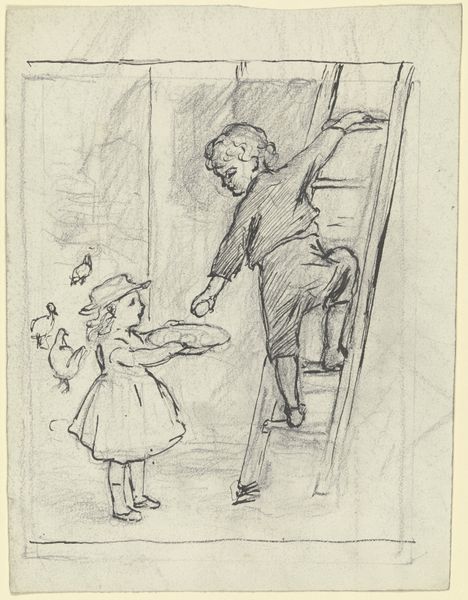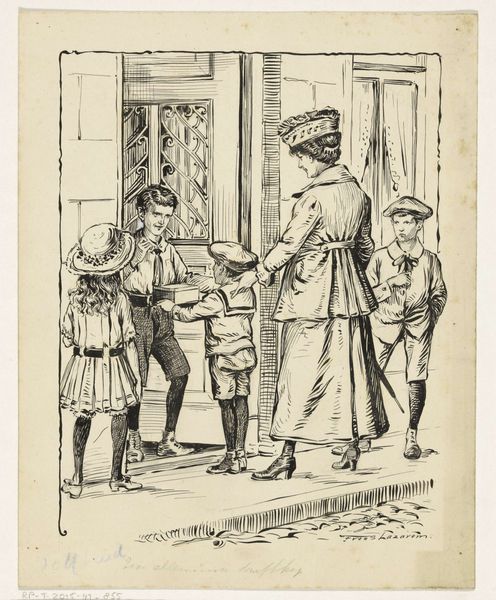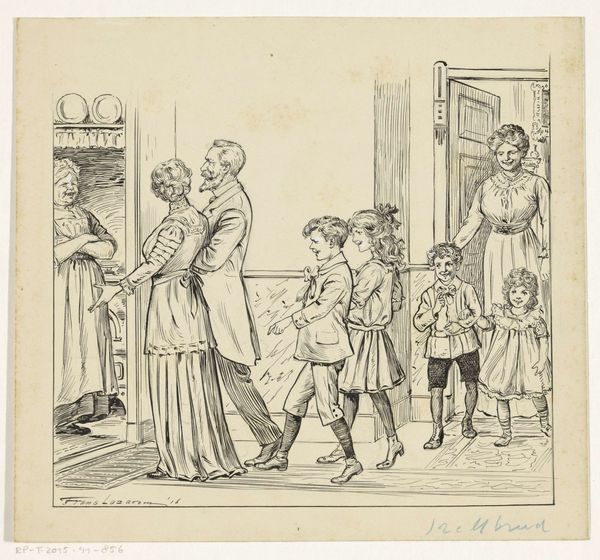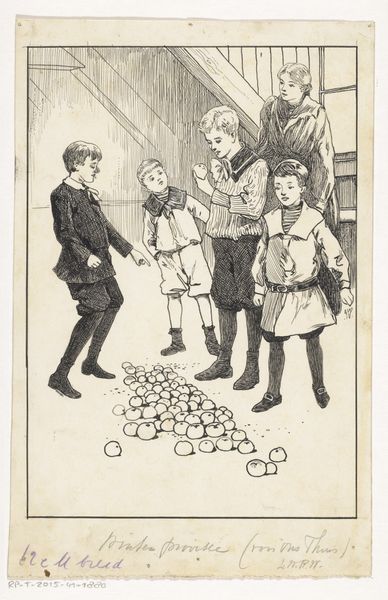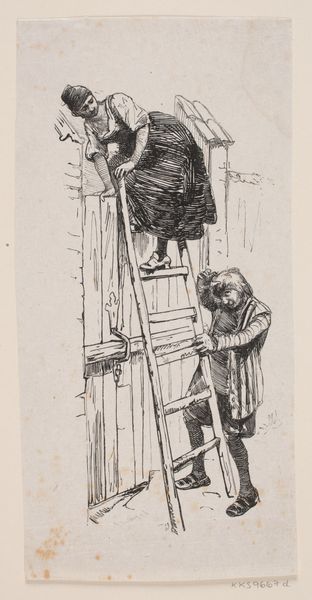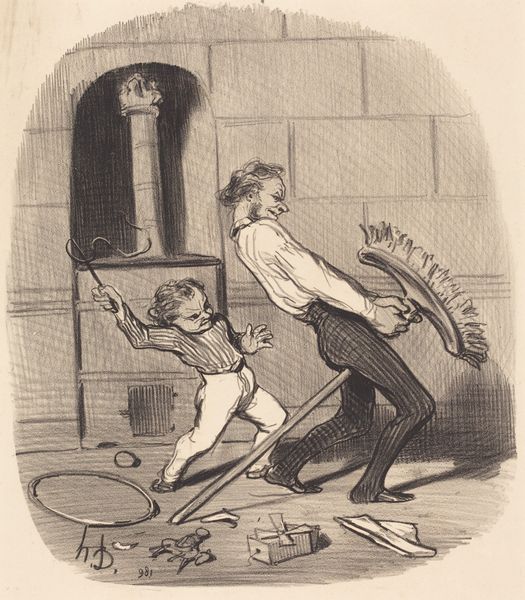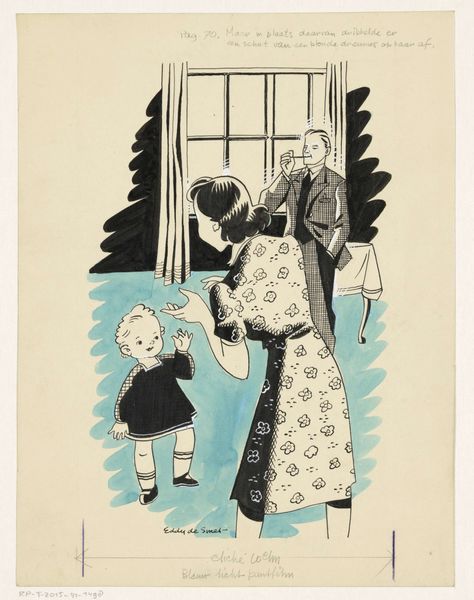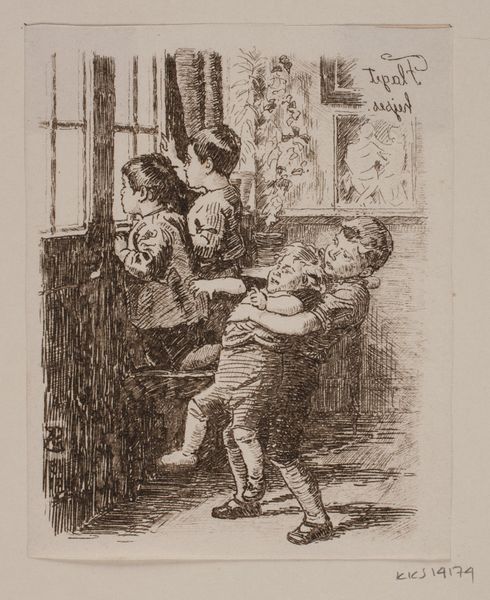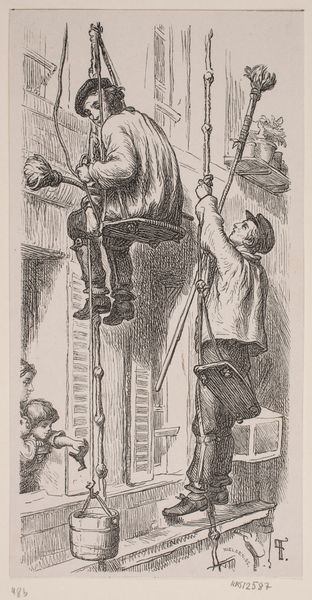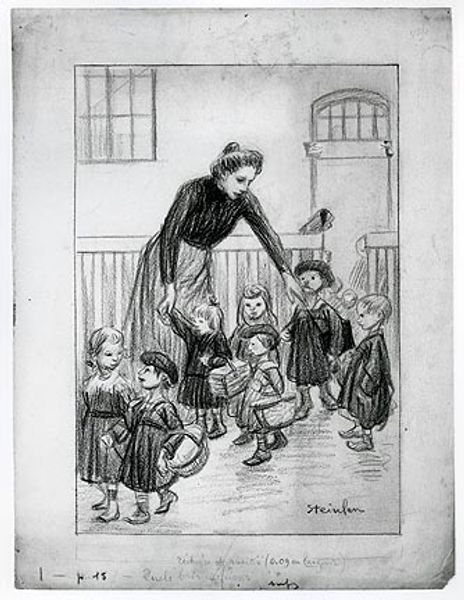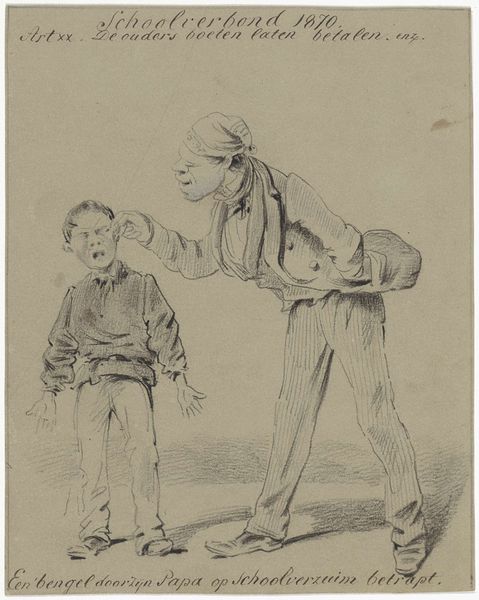
drawing, ink, pen
#
drawing
#
comic strip sketch
#
narrative-art
#
mechanical pen drawing
#
pen illustration
#
cartoon sketch
#
personal sketchbook
#
ink
#
pen-ink sketch
#
pen work
#
sketchbook drawing
#
pen
#
genre-painting
#
storyboard and sketchbook work
#
sketchbook art
Dimensions: height 222 mm, width 184 mm
Copyright: Rijks Museum: Open Domain
Editor: Here we have "Man haalt een bal van een dak," or "Man gets a ball off a roof," created by Frans Lazarom in 1916 using pen and ink. I find its simplicity charming. What do you see in this piece, with all its carefully placed lines? Curator: Well, right away, I notice the cyclical nature embedded in the image. Think of childhood games—the endless retrieving, the repetitions. This simple act echoes larger cycles: loss and recovery, ascent and descent, aspiration and return. Even the roof becomes a symbolic barrier, representing challenges overcome and games resumed. Editor: That's fascinating. The roof as a symbolic barrier... I hadn't considered that. Do the other visual elements carry similar symbolic weight? Curator: Precisely! Consider the ladder: a temporary bridge between worlds, between adulthood and childhood. What happens when you focus on the man himself? Editor: He's offering the ball back to the children. It's about help. About kindness. Curator: Exactly! Consider the benevolent father figure as a representation of providence, and each visual component reveals deeper truths about human relationships and communal experience. The image, then, encapsulates cycles of hope and renewal – vital sustenance for a world engulfed in war when this was created. Editor: I’m beginning to see it now. The simplicity is deceptive; it is heavy with meaning, but its simplicity is the source of its cultural reach. It evokes common humanity despite the time of war. Curator: And see the endurance of human values over time, as relevant today as a century ago. Editor: Thank you, it's amazing how a seemingly simple scene holds such rich symbolic weight.
Comments
No comments
Be the first to comment and join the conversation on the ultimate creative platform.
